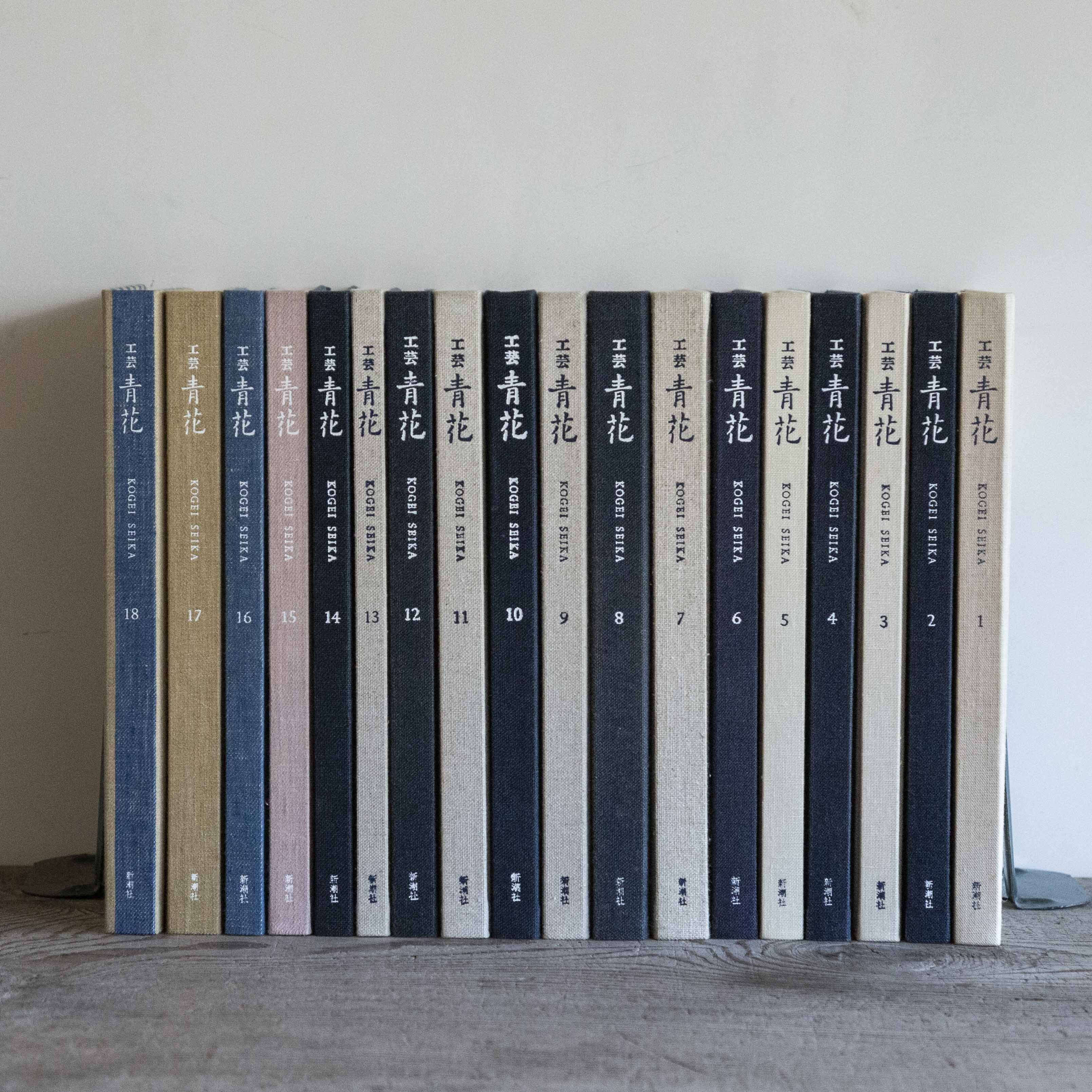
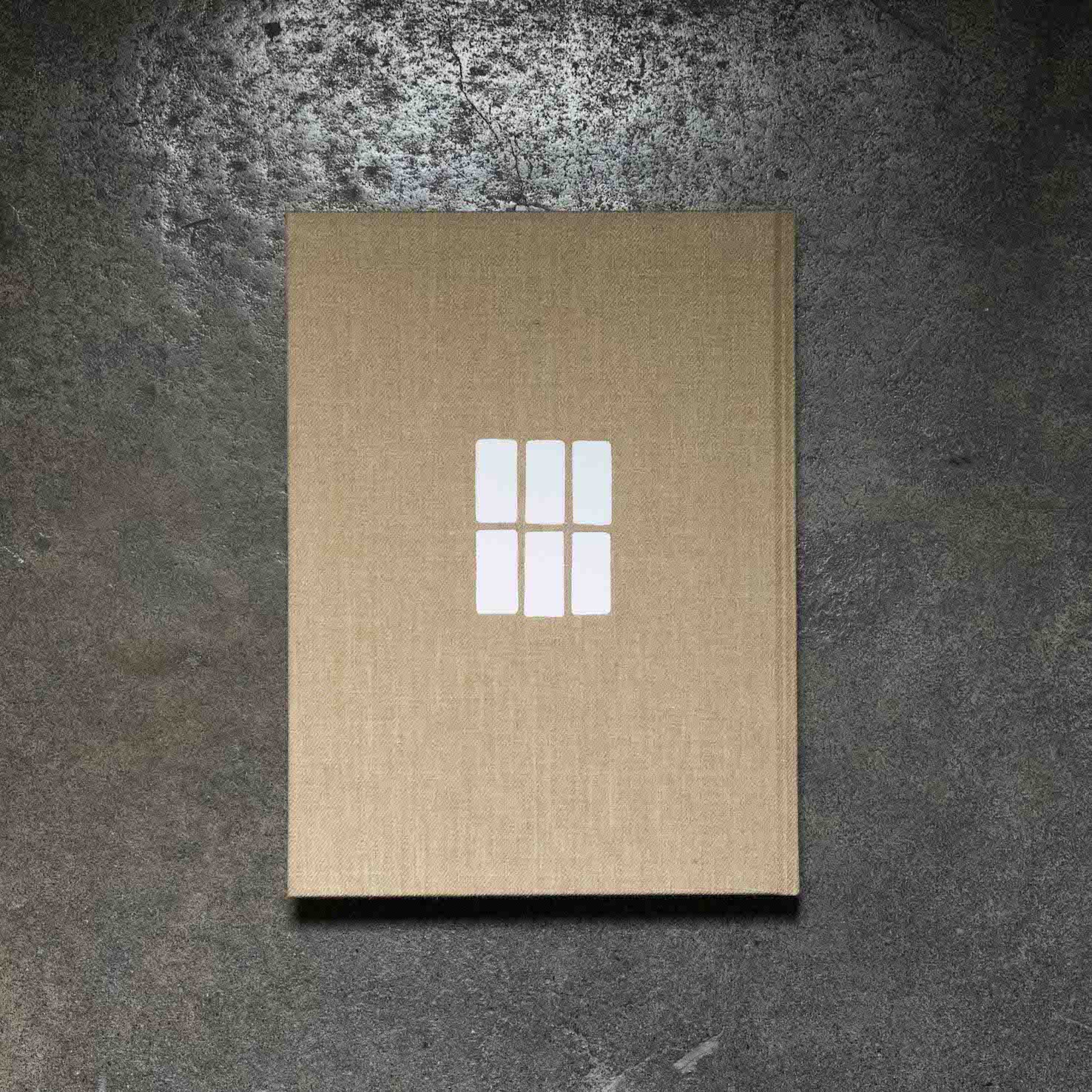
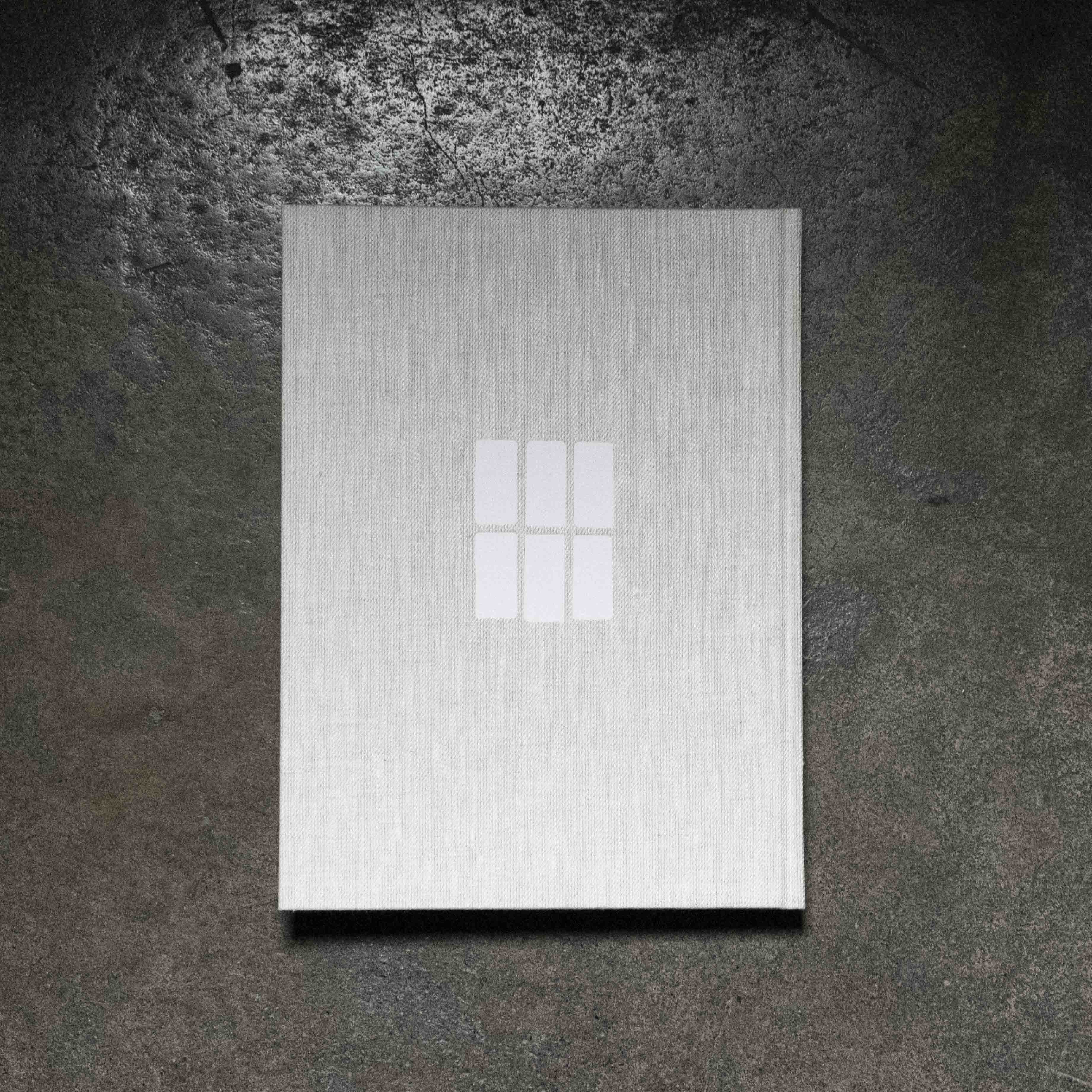
『工芸青花』17号
■2022年1月25日刊
■A4判|45R製麻布張り上製本|見返し手漉和紙(石州)
■カラー232頁|ハタノワタル作の手漉和紙を貼付したページあり
■限定1200部|18,000円+税
御購入はこちらから
https://shop.kogei-seika.jp/products/detail.php?product_id=784
Kogei Seika vol.17
■Published in 2022 by Shinchosha, Tokyo
■A4 in size, linen cloth coverd book with endpaper made of Japanese paper
■232 Colour Plates, Frontispiece with Japanese paper made by Wataru Hatano
■Each chapter is accompanied by an English summary and all photographs are with captions in English
■Limited edition of 1200
■18,000 yen (excluding tax)
To purchase please click
https://shop.kogei-seika.jp/products/detail.php?product_id=784
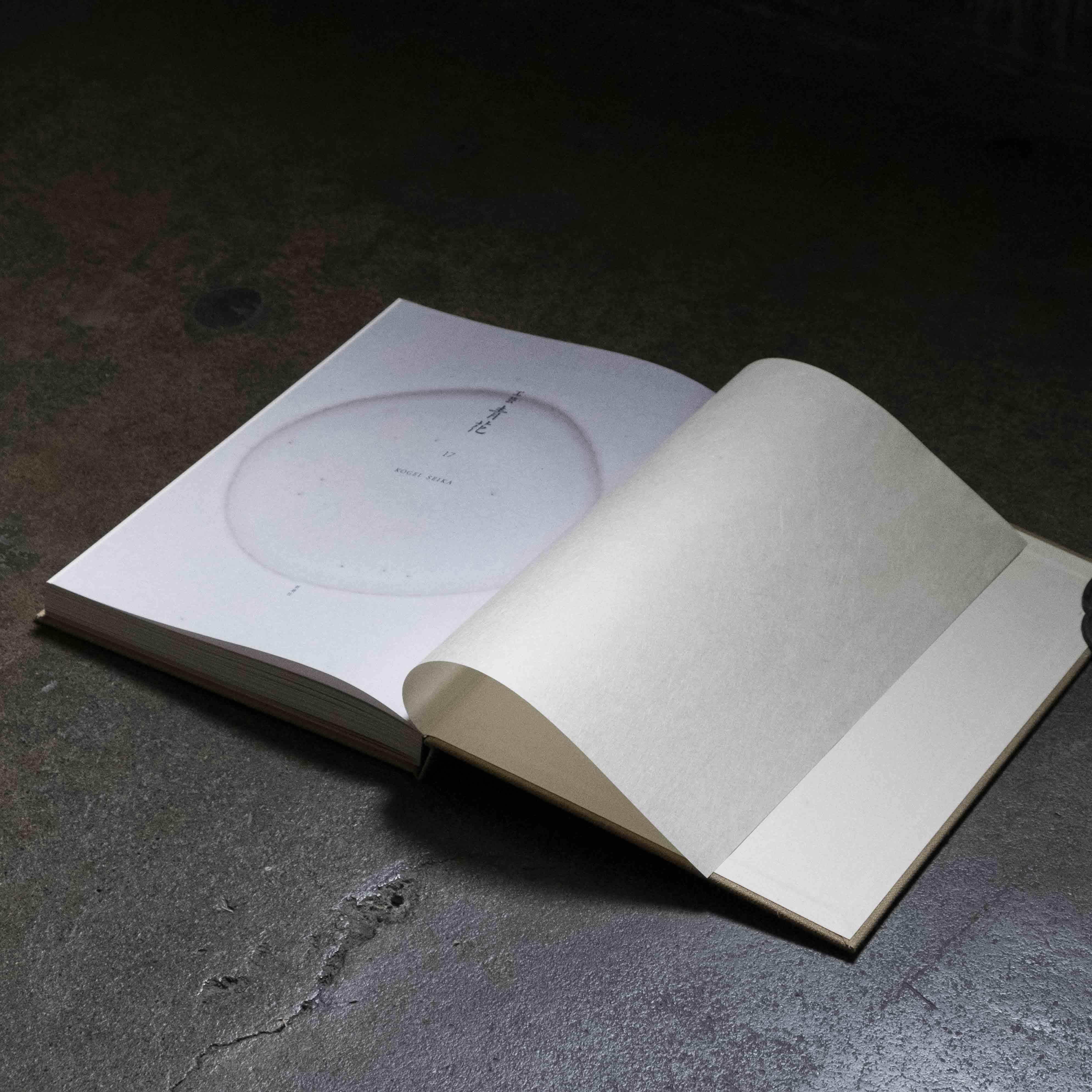
目次 Contents
1|奈良と骨董 無窮亭河瀬虎三郎
Nara and Antiques: Mukyutei, Torasaburo Kawase
・記憶の花 川瀬敏郎
・どれも「奈良」 小松義宜
・河瀬家二代 杉村理
2|タイの古陶 永田コレクション
Antique Thai Ceramics, Nagata Collection
・タイ陶磁概説 閑野譚
・掘るか広げるか 永田玄
3|生活工芸と村上隆
‘Crafts for Daily Life’ and Takashi Murakami
・三谷さんと生活工芸の四〇年 菅野康晴
・三谷龍二さんと松本で 村上隆
・赤木明登さんと輪島で 村上隆
・辻和美さんと金沢で 村上隆
・内田鋼一さんと四日市で 村上隆
・安藤雅信さんと多治見で 村上隆
・松本武明さんと川越で 村上隆
・広瀬一郎さんと西麻布で 村上隆
・平松洋子さんと神楽坂で 村上隆
・高橋みどりさんと南平台で 村上隆
・伊藤まさこさんと代官山で 村上隆
・有山達也さんと馬喰町で 村上隆
・旅の終りに 村上隆
・座談会 生活工芸の作家たち 赤木明登 安藤雅信 内田鋼一 辻和美 三谷龍二 村上隆 菅野康晴
・年表「生活工芸」の時代
連載 Series
・ロベール・クートラスをめぐる断章群11 堀江敏幸
精華抄
石州和紙 若菜晃子
扉の絵 ハタノワタル
1|奈良と骨董 無窮亭河瀬虎三郎
Nara and Antiques: Mukyutei, Torasaburo Kawase
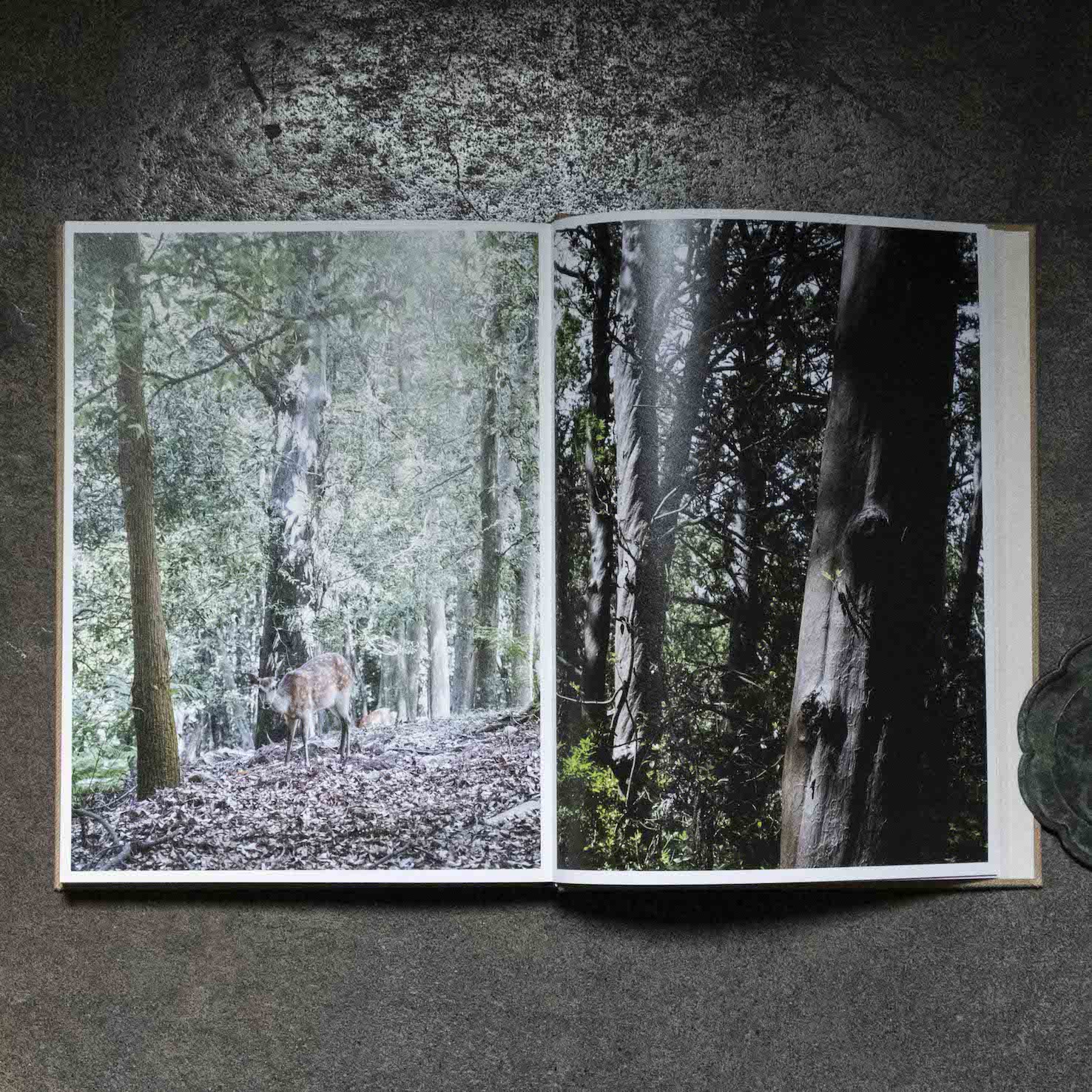
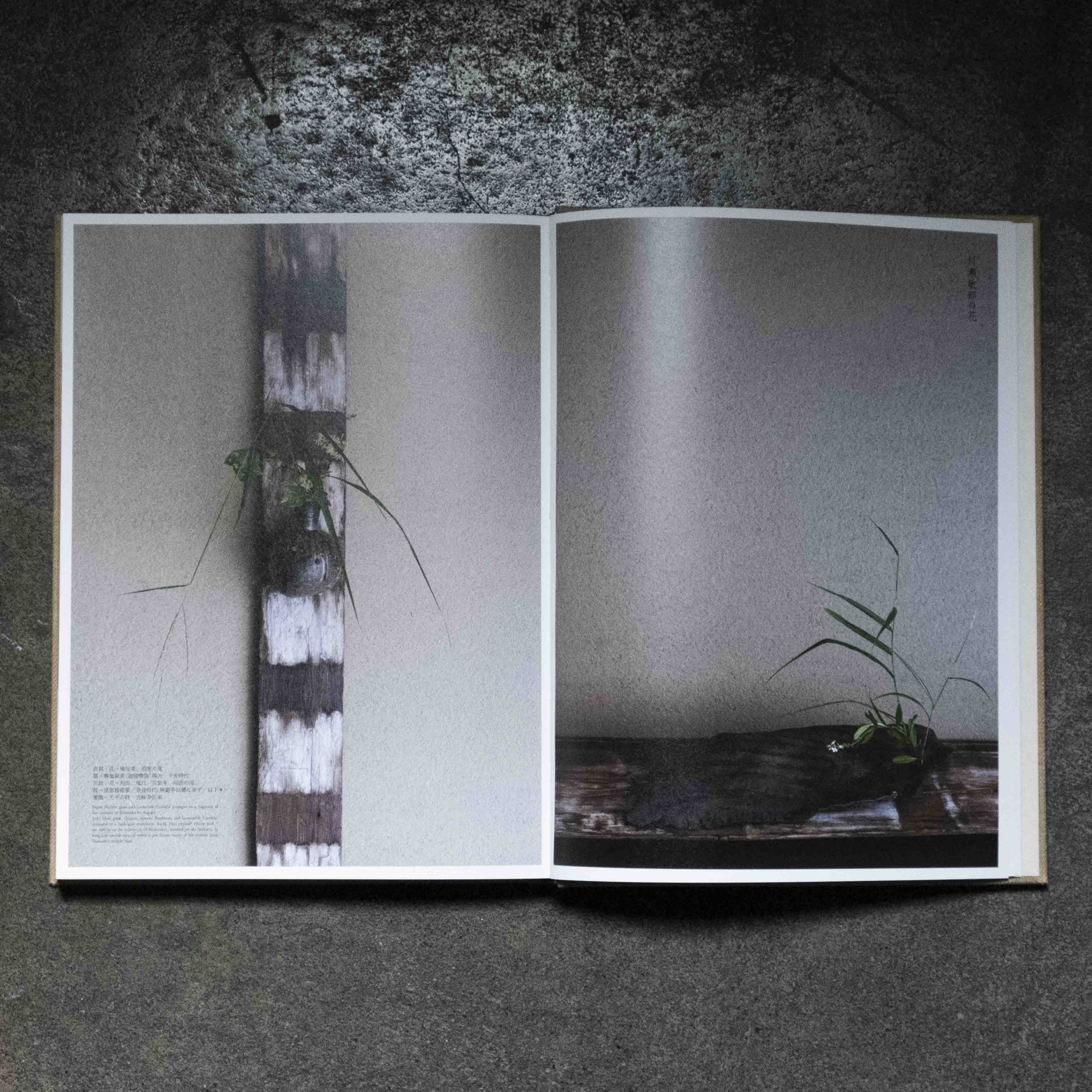
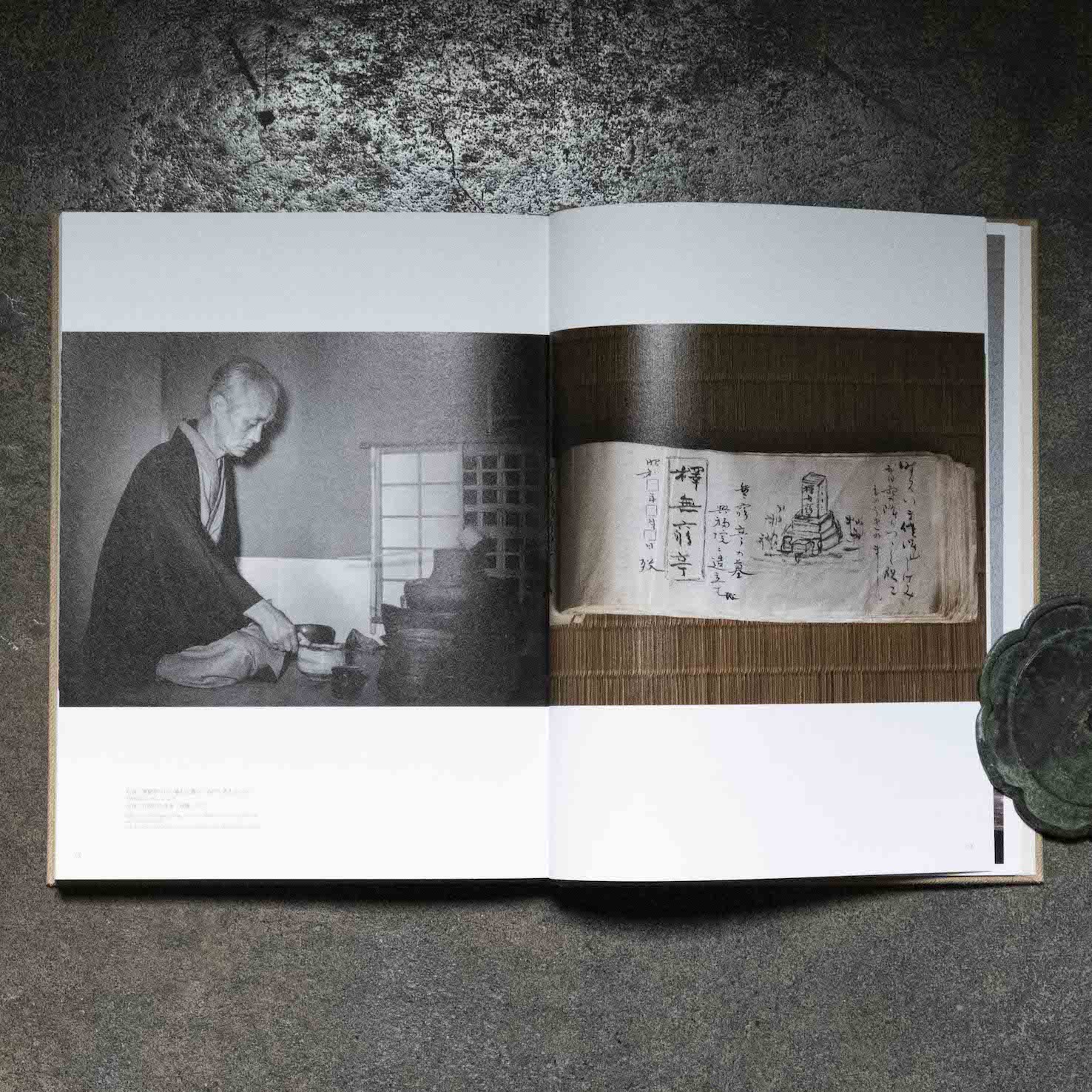
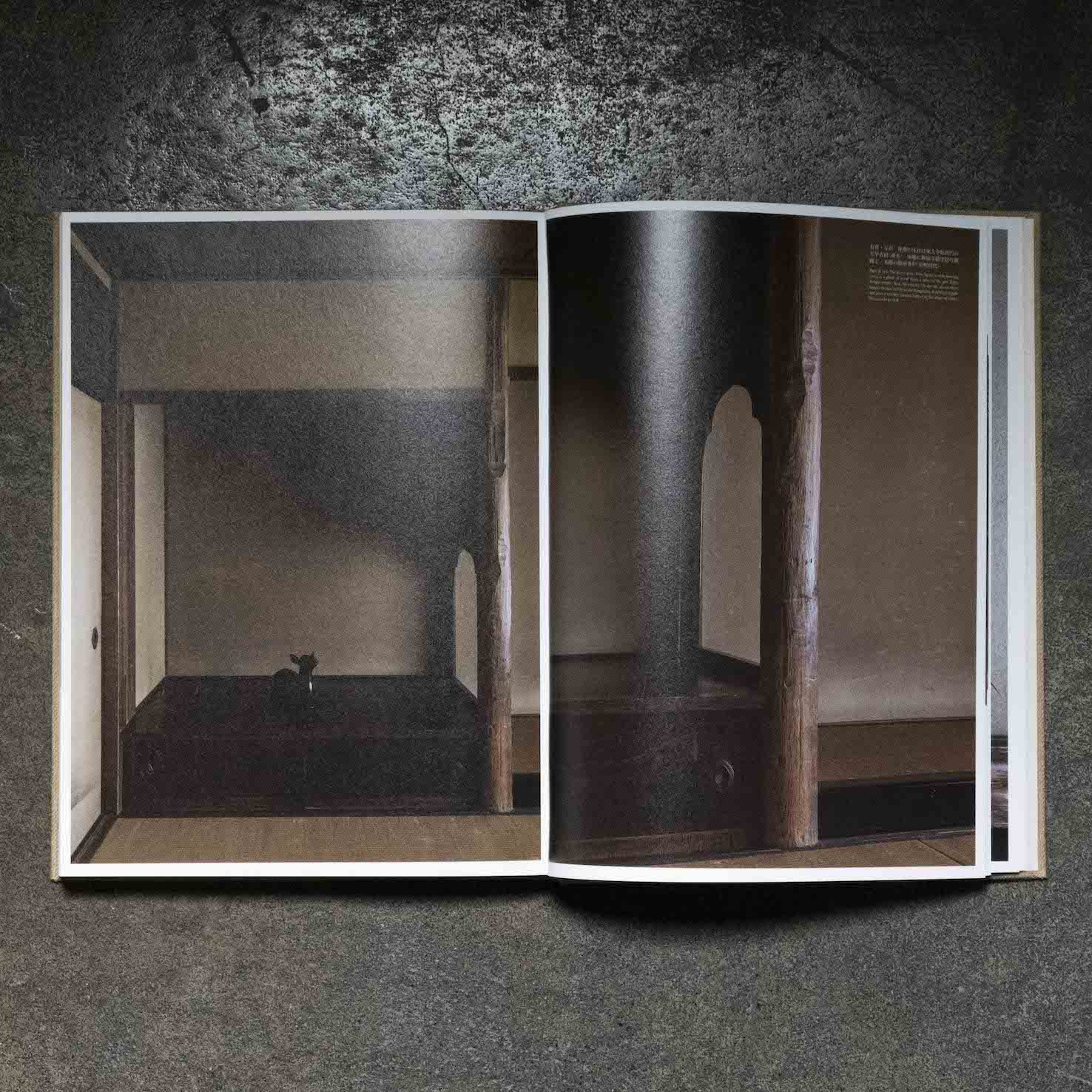
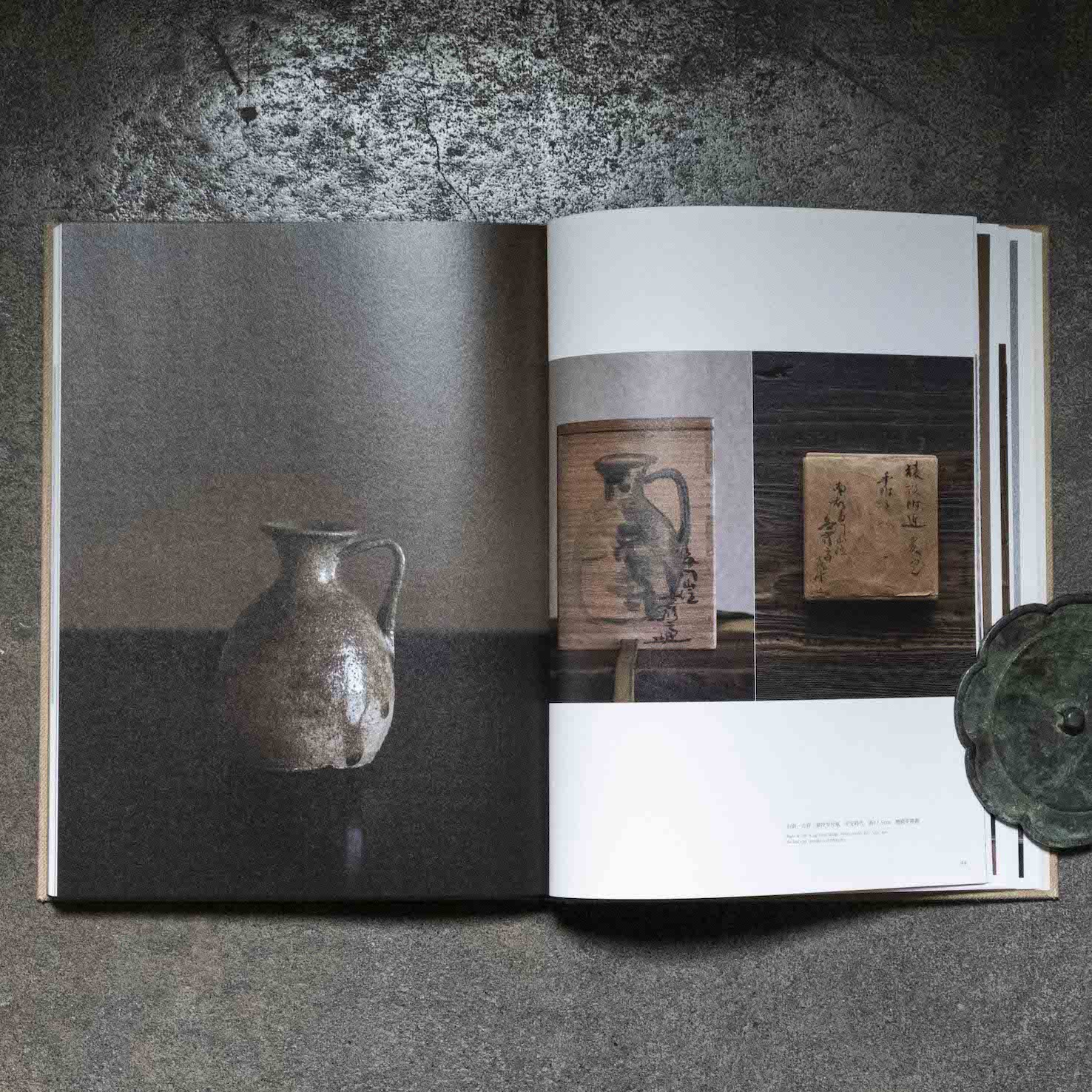
河瀬虎三郎(一八八八年徳島生れ─一九七一年奈良歿)。茶人。号は無窮亭。はじめ大阪で繊維商、刀剣収集。昭和一八年(一九四三)奈良へうつり、聖武天皇陵のある多聞山麓に自邸、茶室をかまえ、仏教美術や平安鎌倉の古陶を生かした奈良らしい茶風をきずく。昭和の電力王で大茶人の耳庵松永安左エ門との交流でも知られる。
〈どれを見ても金力だけでは手に入れられない愛品。座辺に置いてながめて使い、使ってながめる、家族のように生活にとけこんで、ともに暮らしの中にある美術品─という点では川瀬さんほど上手にものを集めている人はめずらしい〉(秦秀雄『名品訪問』)
茶界や骨董界では眼利きとして著名だが、一般的にひろく知られているとはいいがたい。一昨年夏、骨董商の小松義宜さんが無窮亭旧蔵品の写真をみせてくれたのがはじまりだった。いまはお孫さんが住む多聞山の旧邸をたずね、道具の一部はそこで、ほかは小松さんの店で撮影した。花人の川瀬敏郎さんは三四年まえ、無窮亭歿後のことだが、河瀬家で無窮亭ゆかりの道具に花をいけている。川瀬さんのながいキャリアのなかでも印象にのこる花で、今回も依頼したところ、姿も意味あいもことなる、いま思う花をいけてくれた。
無窮亭が茶会記や道具のことなどさまざま書きとめた冊子がのこっていて、『竹柏のしづく』と題されている。竹柏は梛で、春日大社の社叢には古代の献木にもとづく純林があり、無窮亭も庭に多く植えていた。大木になると樹皮がはがれ、幹は表面に螺旋状のねじれをみせつつ直立するので、おのずと、なんとなく、天をみあげることになる。S
Torasaburo Kawase (b. 1888 in Tokushima - d. 1971 in Nara). Tea master. He called himself Mukyutei. He first worked as a textile merchant and sword collector in Osaka. In 1943 he moved to Nara, where he built his residence and tea houses at the foot of Mt. Tamon, which environs Emperor Shomu’s tomb. He created a style of tea ceremony, typical of Nara, using Buddhist art and ancient pottery from the Heian and Kamakura periods. He is also known for his relationship with Jian / Yasuzaemon Matsunaga, the king of electric power in the Showa period and a great tea master.
‘This is a piece of art that cannot be acquired by money alone. It is rare to find a person who collects things as skillfully as Kawase in the sense that he puts them on the table, looks at them and uses them, uses them and looks at them. They become a part of his life as his family’, writes Hideo Hata.
Kawase is well known as a connoisseur in the tea and antique circles, but not the general public. In the summer of the year before last, Yoshinari Komatsu, an antique dealer, showed me a photograph of the former collection of Mukyutei. That was the beginning of the idea for the article. I photographed some at his former residence in Tamon, where his grandson lives, and some in Komatsu’s shop. Toshiro Kawase, an Ikebana artist, arranged flowers there 34 years ago, after the death of Mukyutei, on objects related to the late master. It was a memorable time for Toshiro in his long career, too. I requested the same for Kogei Seika. The flower he arranged was different from the time in appearance and meaning. Nevertheless, it is the flower for now.
There remains a booklet in which Mukyutei wrote down his thoughts about tea ceremonies and utensils. It is titled Droplets of Nagi (left page). Nagi is a type of evergreen in a sacred forest in the Kasuga Taisha shrine, dedicated in ancient time. Mukyutei planted many in his garden. The bark peels off when the tree becomes large, and the trunk stands upright with a spiral twist on the surface so that it naturally, makes up, look up to the sky. (S)
2|タイの古陶 永田コレクション
Antique Thai Ceramics, Nagata Collection
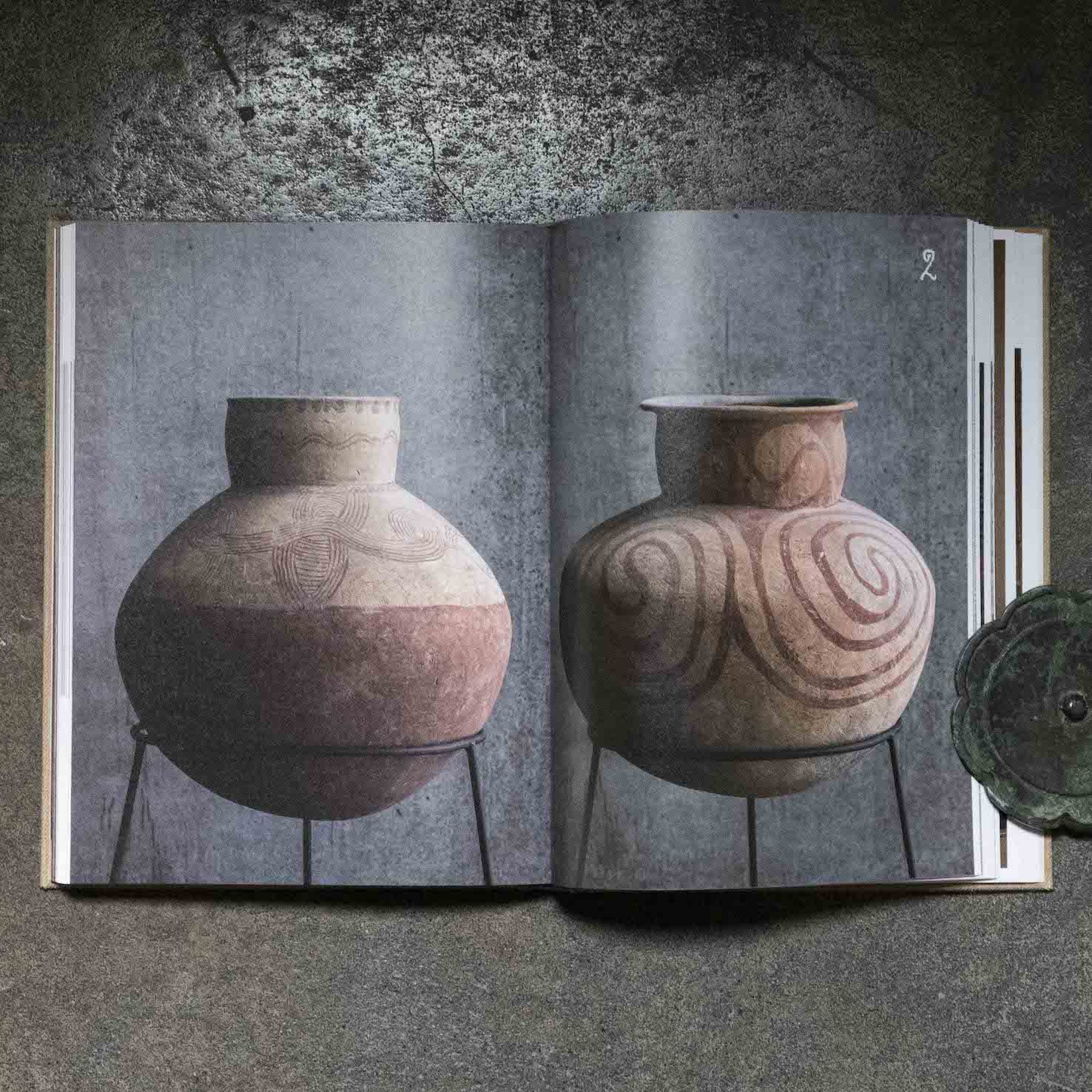
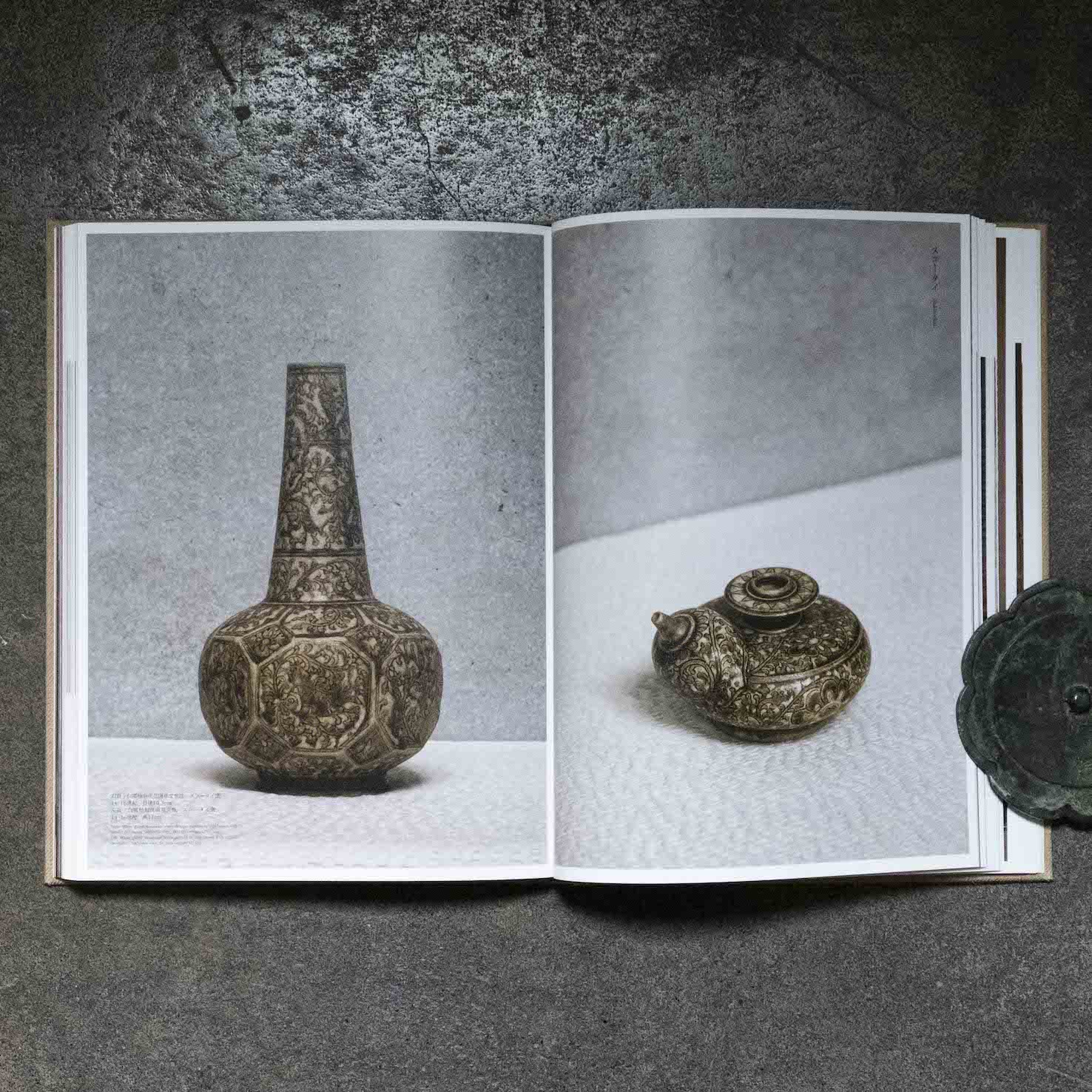
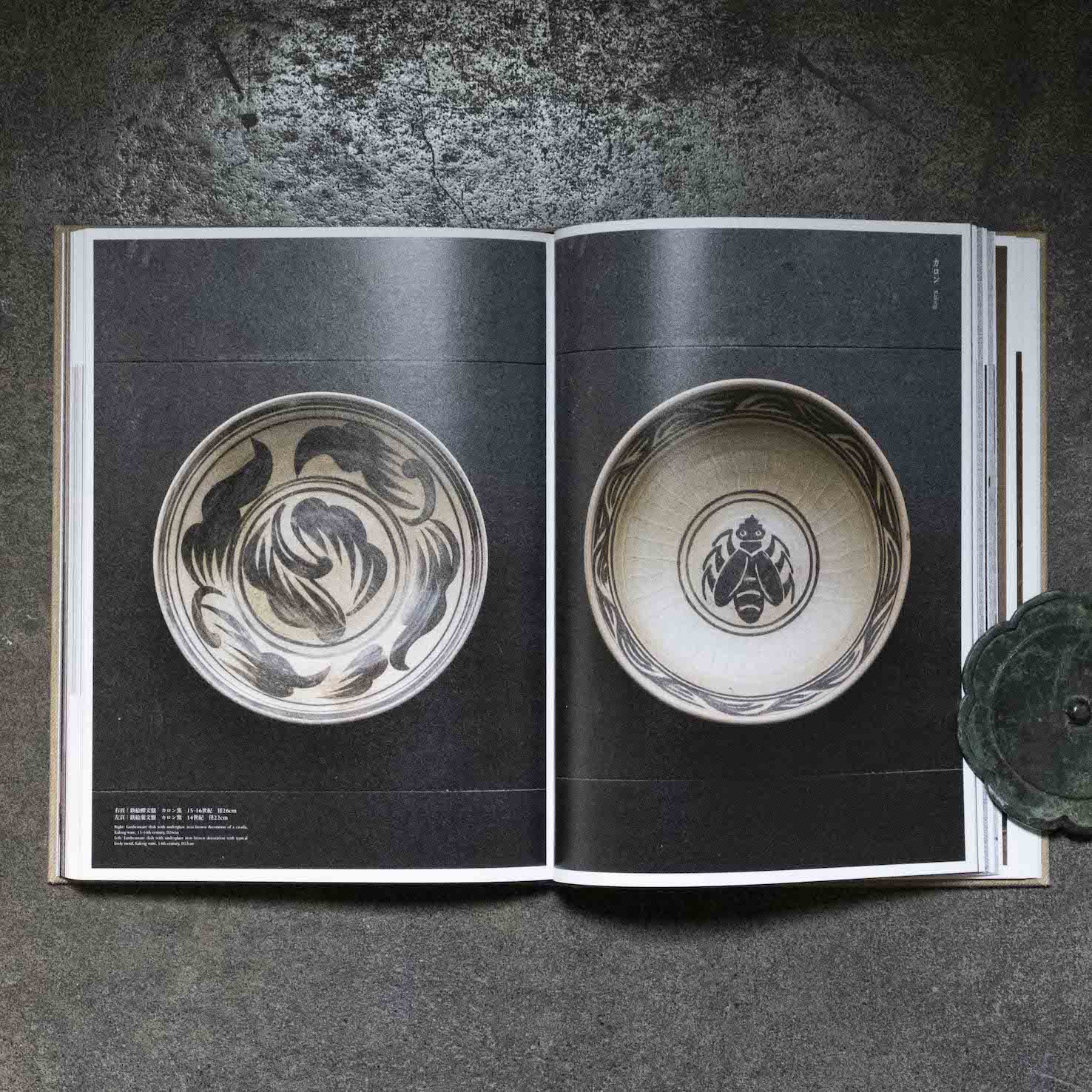
京都にKAFE工船という珈琲店があり、そこは、焙煎家オオヤミノルさんの店なのだが、オオヤさんとはここ一〇年ほど、毎年のように松本で会っていた。おなじ工芸の催事に参加していたので、工芸の話ばかりしていた。いかにも都市の人らしく、彼の話は辛辣で、繊細で、批評家とはこういう人のことだろうと思っていた。
そのオオヤさんが、永田玄さん(一九五二年生れ)に会わせてくれた。ふたりの関係の詳細は知らないが、オオヤさんが永田さんを敬愛(畏敬かもしれない)していることはすぐにわかった。もとマガジンハウスの編集者で、スポーツカーの専門家、ゴルフの指南書を著してヒットさせ、小説を書けば種村季弘が讃辞をおくる。近現代写真の収集家でもある。ほかの顔もあるはずだが、オオヤさんは私に、タイ古陶磁の収集家として紹介した。
撮影したのはごく一部(青花の記事用の選択なので、かたよりがある)。大収集家で、数もあるが、質におどろいた。東南アジアの古陶磁は日本でもいくつかコレクションが知られ、展覧会や書籍で紹介されているが、くらべると、永田さんのタイ陶磁コレクションがいかにつぶぞろいかがわかると思う。永田さんは骨董工芸にかんしては、タイのやきもの(しかも北部が主。かつてタイは南北で王朝がことなり、文化も異風だったという)以外ほとんど手がけていない。収集の契機や経緯をきくと(現地の事情がわかり興味ぶかい)、この質量もさもありなんとは思うものの、ただしきびしくえらんでもいて、そのものさしは、フェラーリやラルティーグの眼利きとしての眼なのだろう。画家(永田力)の家という出自もあるのだろうけれど、撮影のあいだは、永田さんという個性をつちかった「時代」のことを考えていた。S
There is a coffee shop in Kyoto called KAFE KOSEN. The owner, Minoru Oya, is a specialist in roasting coffee beans. We had been meeting in Matsumoto every year for the last ten years or so, and as we were both taking part in the same craft events, we talked about craft all the time. Like any urbanite, his talk was harsh and sensitive, and I thought this is what a critic should be.
Oya took me to meet Gen Nagata (born in 1952). I don’t know how they met, but it was immediately apparent that Oya respected (or perhaps revered) Nagata. Formerly an editor at Magazine House, he is an expert on sports cars, has written a successful golf instruction book, and a novel that Suehiro Tanemura has praised. He is also a collector of modern and contemporary photographs. I am sure there are other faces, but Oya introduced him to me as a collector of Thai ceramics.
I photographed only a tiny part of the collection (The selection may seen biased. That is just because I chose them for Kogei Seika). Nevertheless, I am surprised by its quality and quantity. There are several collections of Southeast Asian ceramics in Japan, and there have been exhibitions and books introducing the area. But Nagata’s collection of Thai ceramics is nothing comparable. His ceramics are mainly from the Northern part of Thailand, but some are from the south. The country had different dynasties in the north and south, so the culture was very different. When we hear about the impetus and the history of the collection (it is interesting to learn about the local situation), we understand why this mass is so high in quality. At the same time, he has been very selective. It is the eye for Ferrari and J.H. Lartigue. Nagata is a son of a painter Riki Nagata, and his ‘eye’ might have grown in an artistic upbringing. However, I thought of the ‘era’ that gave Nagata’s personality during the photo shoots. (S)
3|生活工芸と村上隆
‘Crafts for Daily Life’ and Takashi Murakami
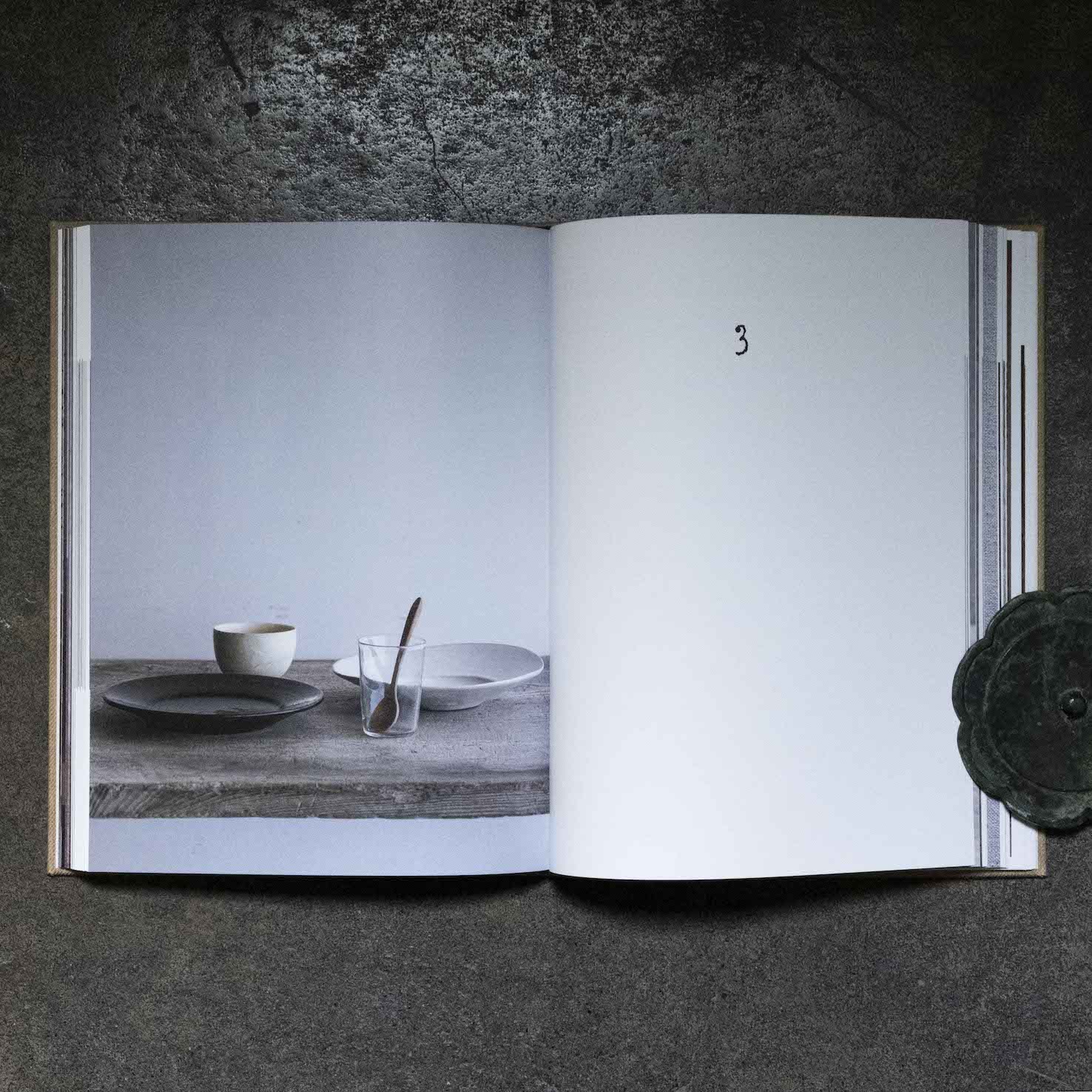
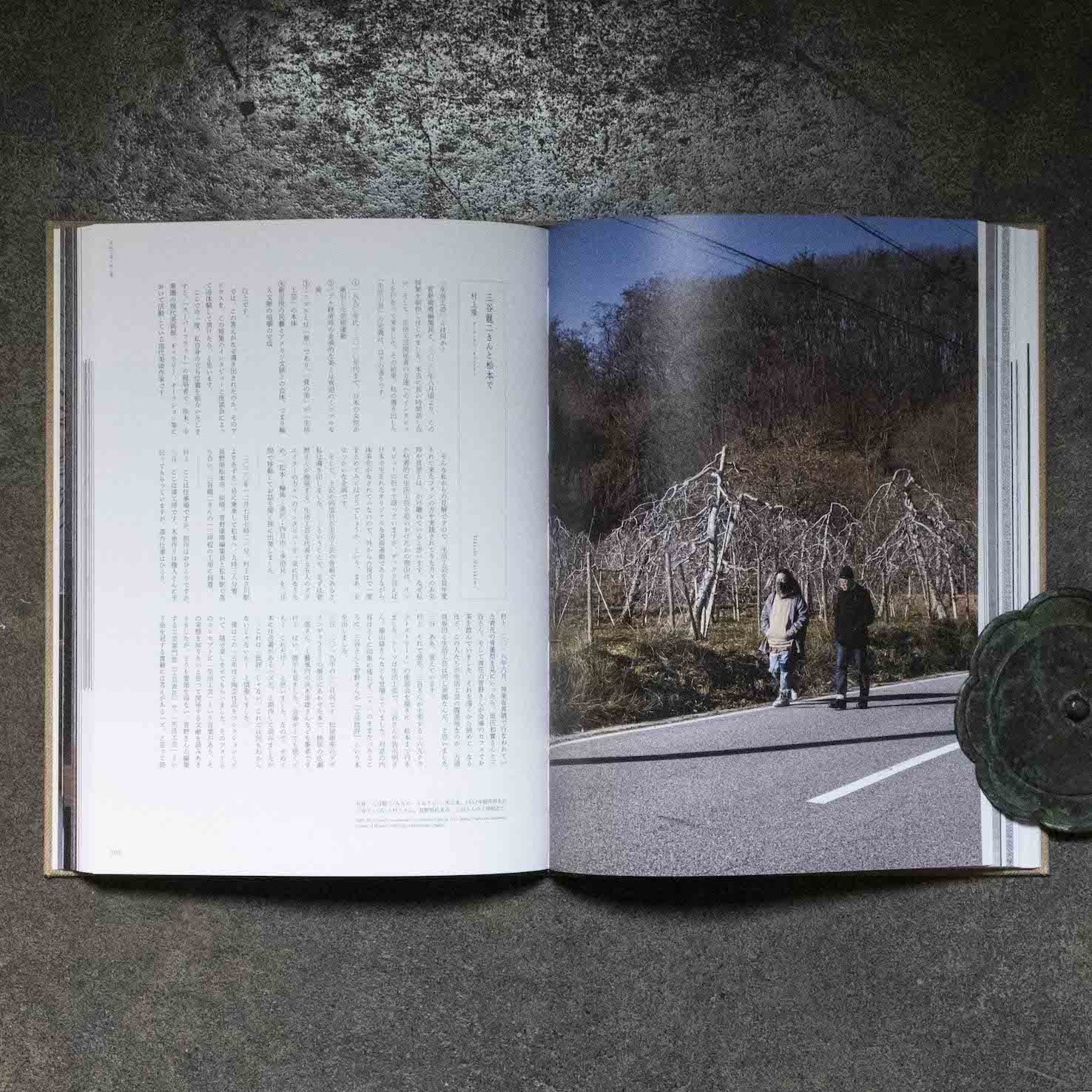
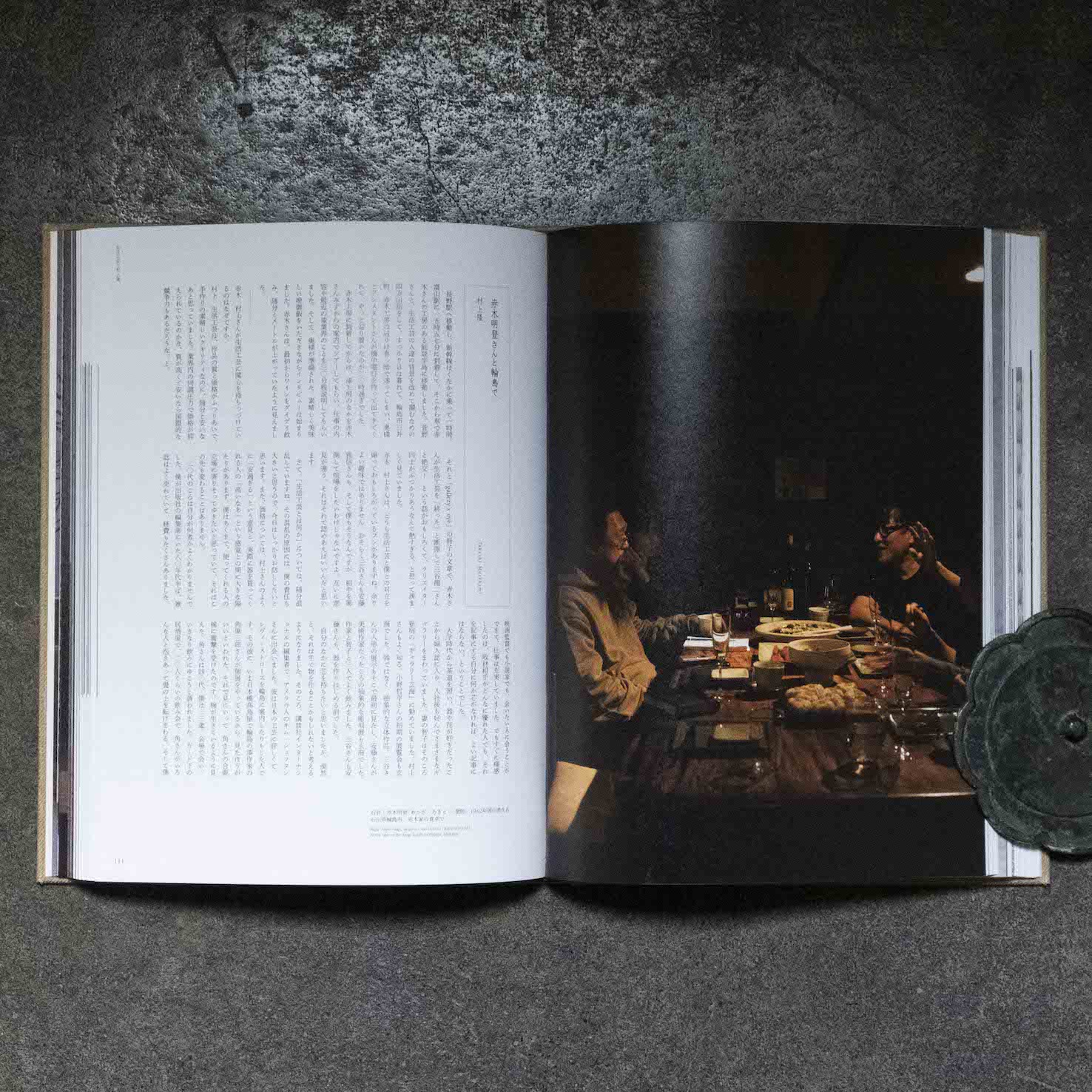
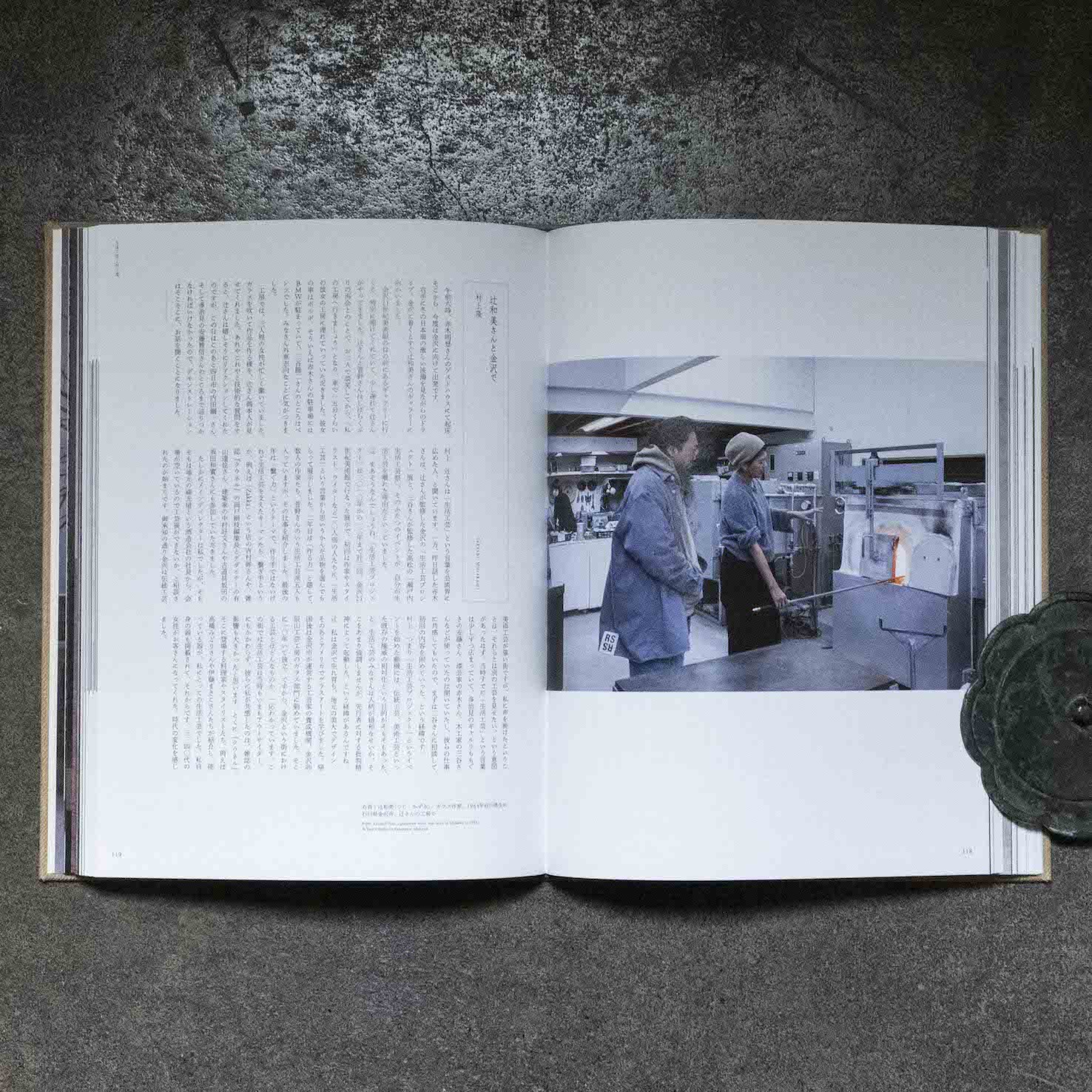
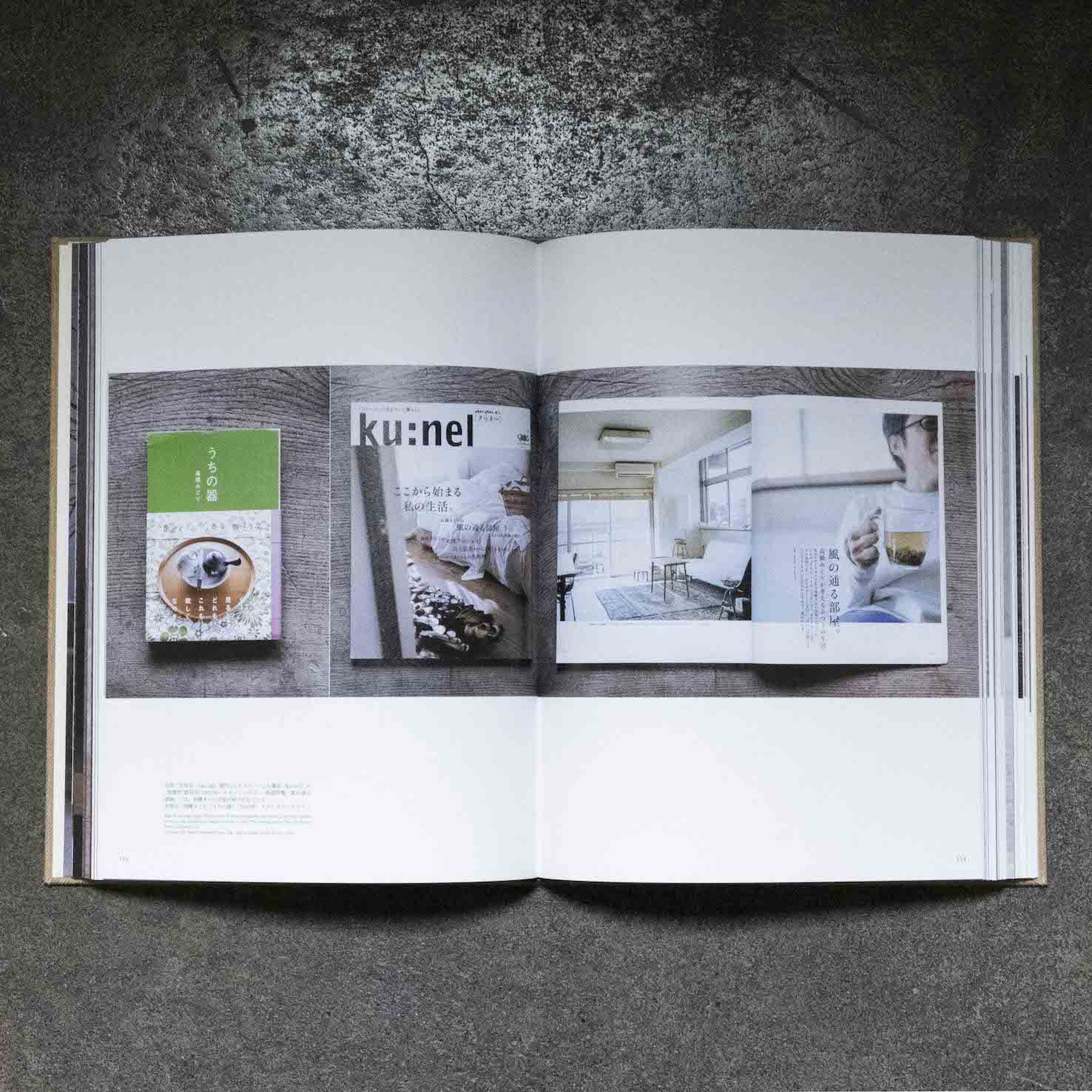
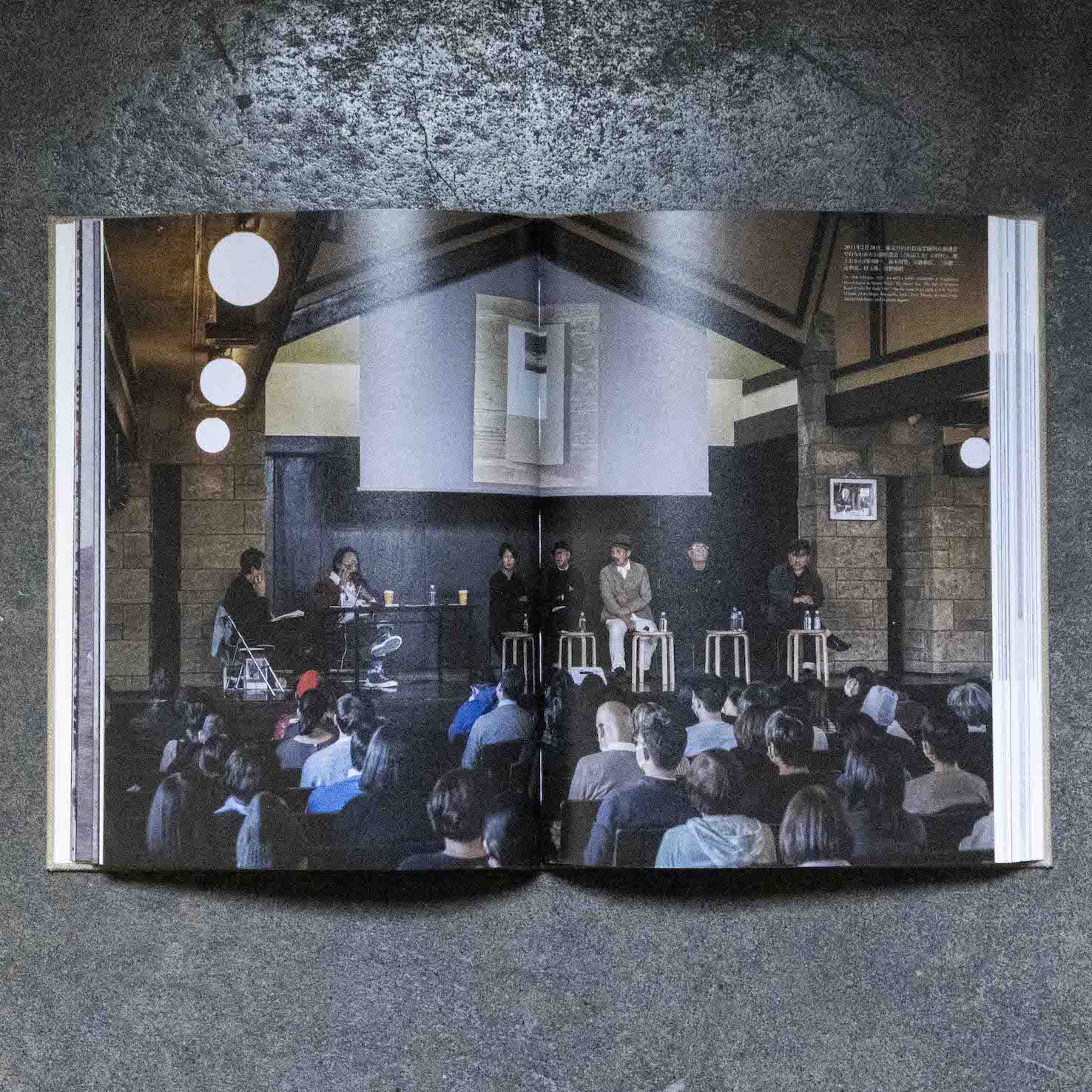
生活も工芸もふつうの言葉だから、「生活工芸」もなんとなく意味はわかるはずだが、二〇一〇年前後から、それとはべつの意味をもつ、ある概念をさす語になった。以下はその、私(菅野)なりの定義。
「現代日本のバブル経済崩壊後に、もてる者たちが起動させた、もたざる者たちによる、もたざる者たちのための生活文化。〈もてる/もたざる〉は経済にかぎらず、人脈、権威、技術、地盤、経験、権利等」
そして「生活工芸」の時代は、以下の三期にわけられると考えている。
・初期/二〇〇〇年代前半─メディア(ギャラリー、雑誌、スタイリスト等)主導期
・盛期/二〇〇〇年代後半─作家主導期
・後期/二〇一〇年代前半─概念形成期
二〇二〇年の冬、美術家の村上隆さん(一九六二年生れ)と生活工芸派の作家(器作家)五人をたずねた。それから翌年の春にかけて、生活工芸を起動させた関係者(工芸店主、エッセイスト、スタイリスト、デザイナー)六人を取材した。
作家でありつつ批評家でもある村上さんの動機は、生活工芸が、マンガやアニメ同様に(無自覚ながらも)戦後日本を代表する文化たりえているのではないか、という問いだった。だとすれば、ときがたって雲散霧消するまえに、当事者たちの証言をあつめ、歴史化し、しっかり概念化すべき、と発破をかけられた。
二〇〇〇年代、『芸術新潮』編集部にいて生活工芸派の記事をつくっていた私も当事者なのかもしれない。その意味で、村上さんとの旅は、昔日へ立ちかえるような、淡い郷愁をともなう旅でもあった。他方で、むろん村上さんにはそんな甘さはみじんもなかった。どこまでも文化芸術の力を信じる、憂国の人だった。S
The term ‘Crafts for Daily Life(Seikatsu Kogei), seems obvious, as both ‘crafts (kogei)’and ‘daily life (seikatsu)’are common words. However, since around 2010, it has come to mean something else, a concept. The following is my (Sugano’s) own definition.
It is a lifestyle launched by have-nots for themselves and propagated by the haves after the collapse of the bubble economy in contemporary Japan. The haves and have-nots are not limited to their economic situation but also include personal contacts, authority, skills, cultural background, experience, rights, etc.
I believe there are three periods in the history of Seikatsu Kogei.
・Early period / the early 2000s: media (galleries, magazines, stylists, etc.) -led period.
・High period / the late 2000s: artist-led period.
・Late period / the early 2010s: concept formation period.
In the winter of 2020, the artist Takashi Murakami (born in 1962) and I visited five ‘Seikatsu Kogei’ artists. In the spring of the following year, we interviewed six people who propagated the movement (craft shop owners, essayists, stylists, and designers).
As an artist with a critical mind, a question motivated Murakami to study the movement. Does Seikatsu Kogei (albeit unconsciously) represent the post-war Japanese culture like manga and animation? If that is the case, it is urgent to conceptualize the movement before it fades away. He urged me to collect the testimonies of those involved.
In the 2000s, I was working in the editorial department of Geijutsu Shincho, writing articles on the Seikatsu Kogei artists. In this sense, my trip with Murakami was like going back to a bygone era with a vague sense of nostalgia. On the other hand, of course, Murakami was not naive in the slightest. He is a patriot who believed in the power of culture and Art. (S)

